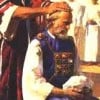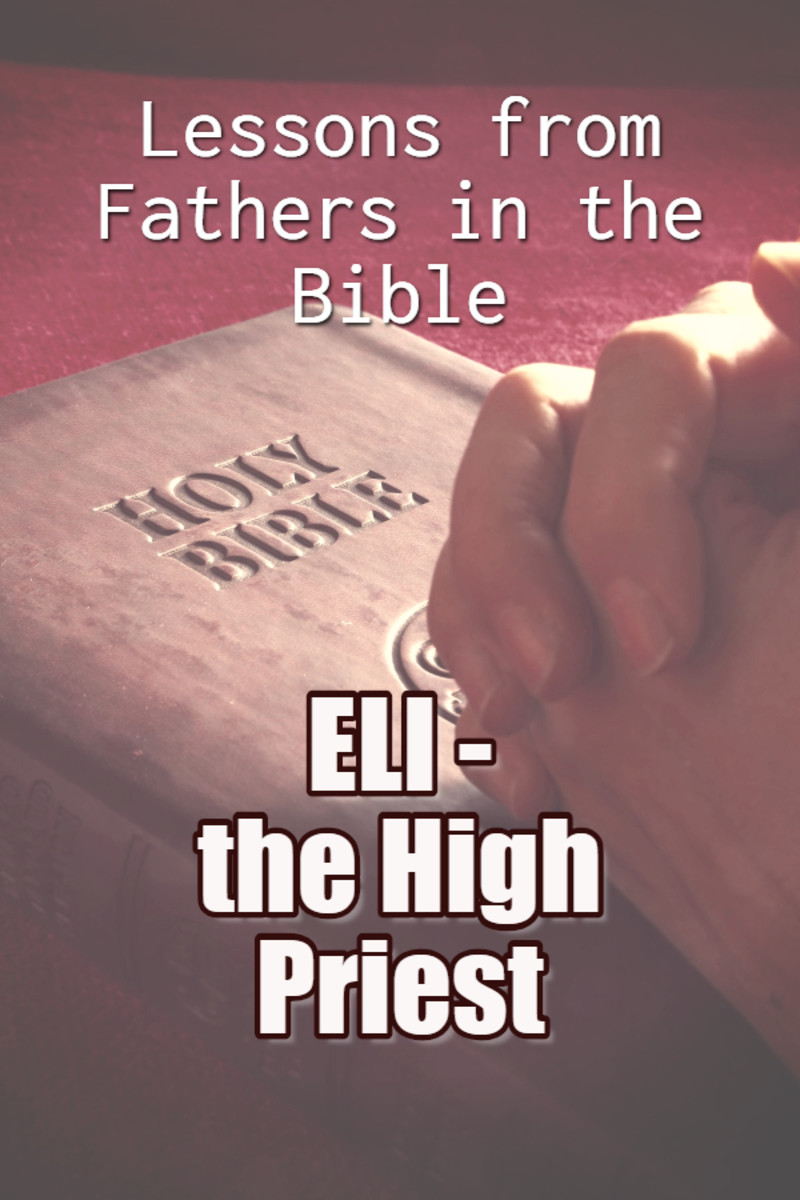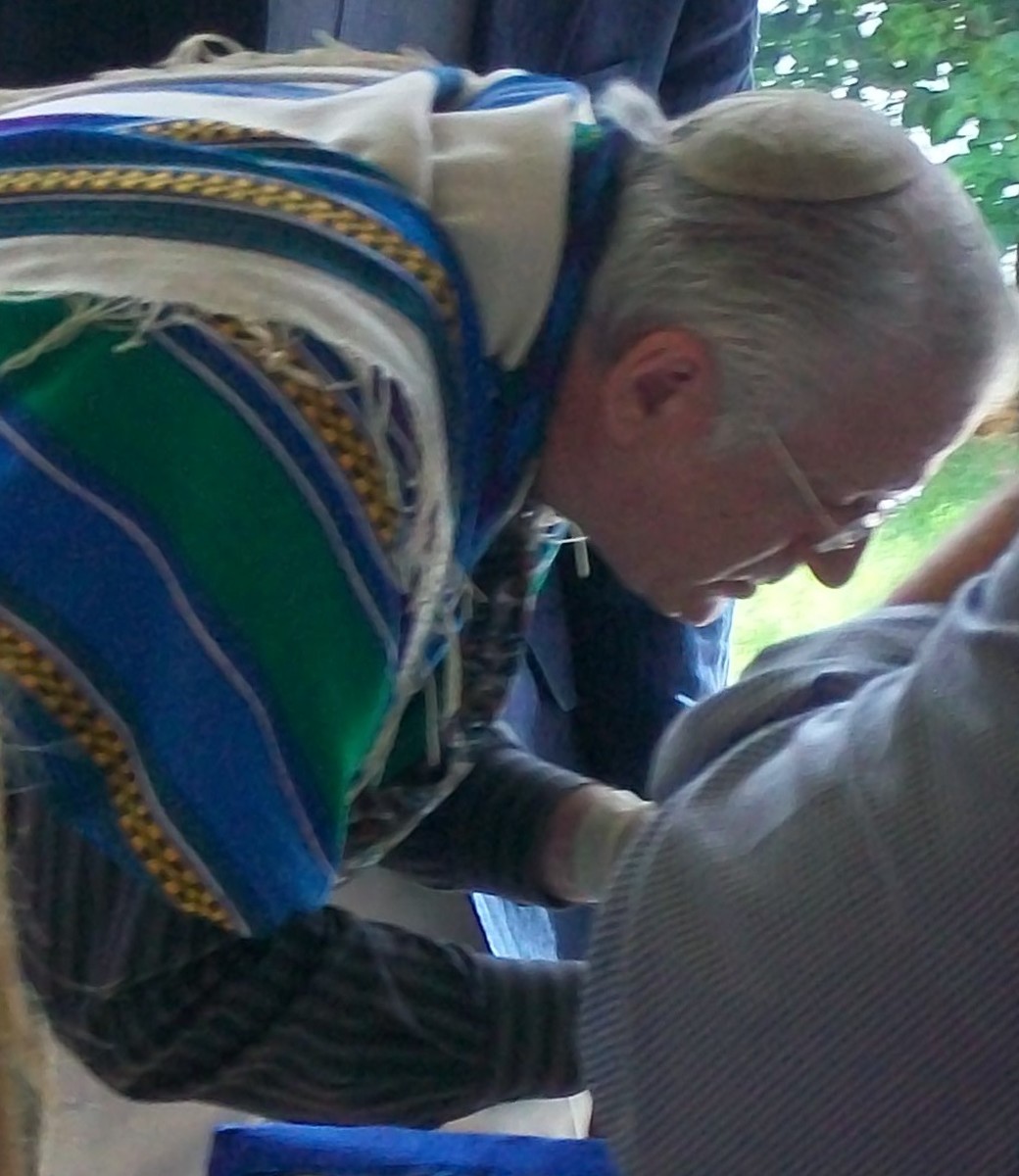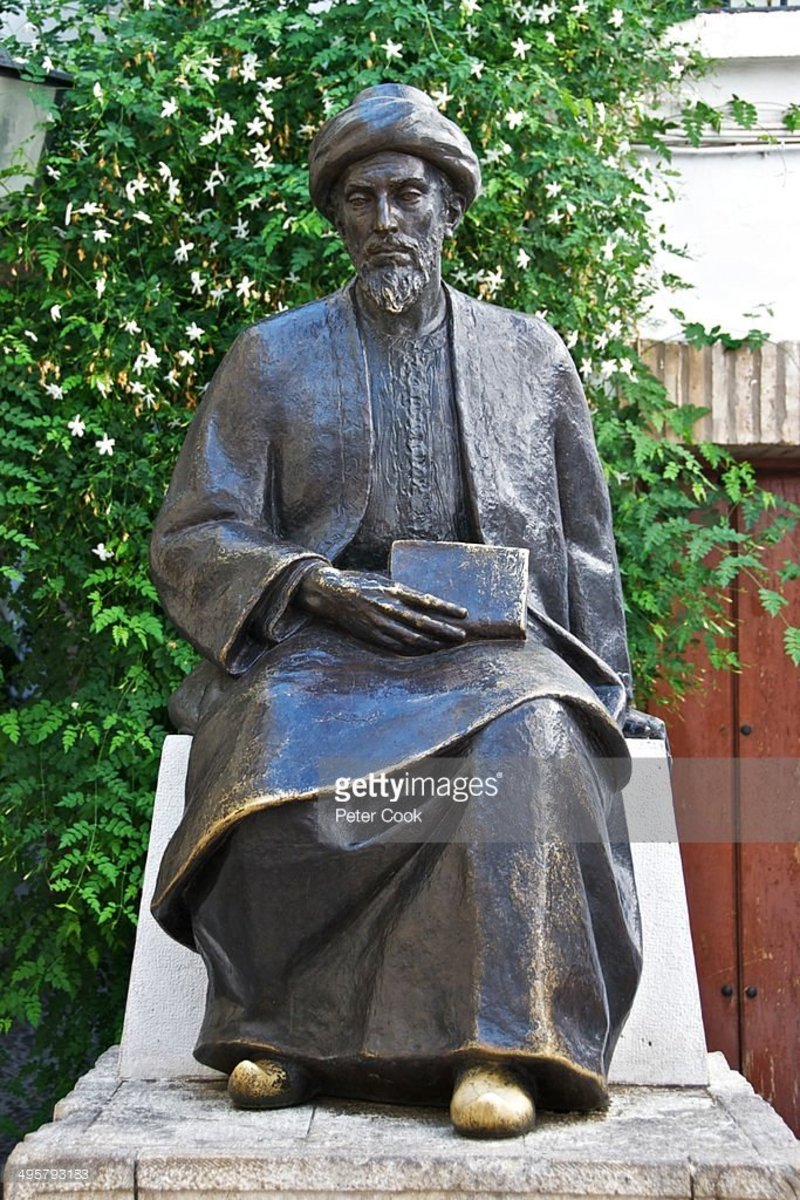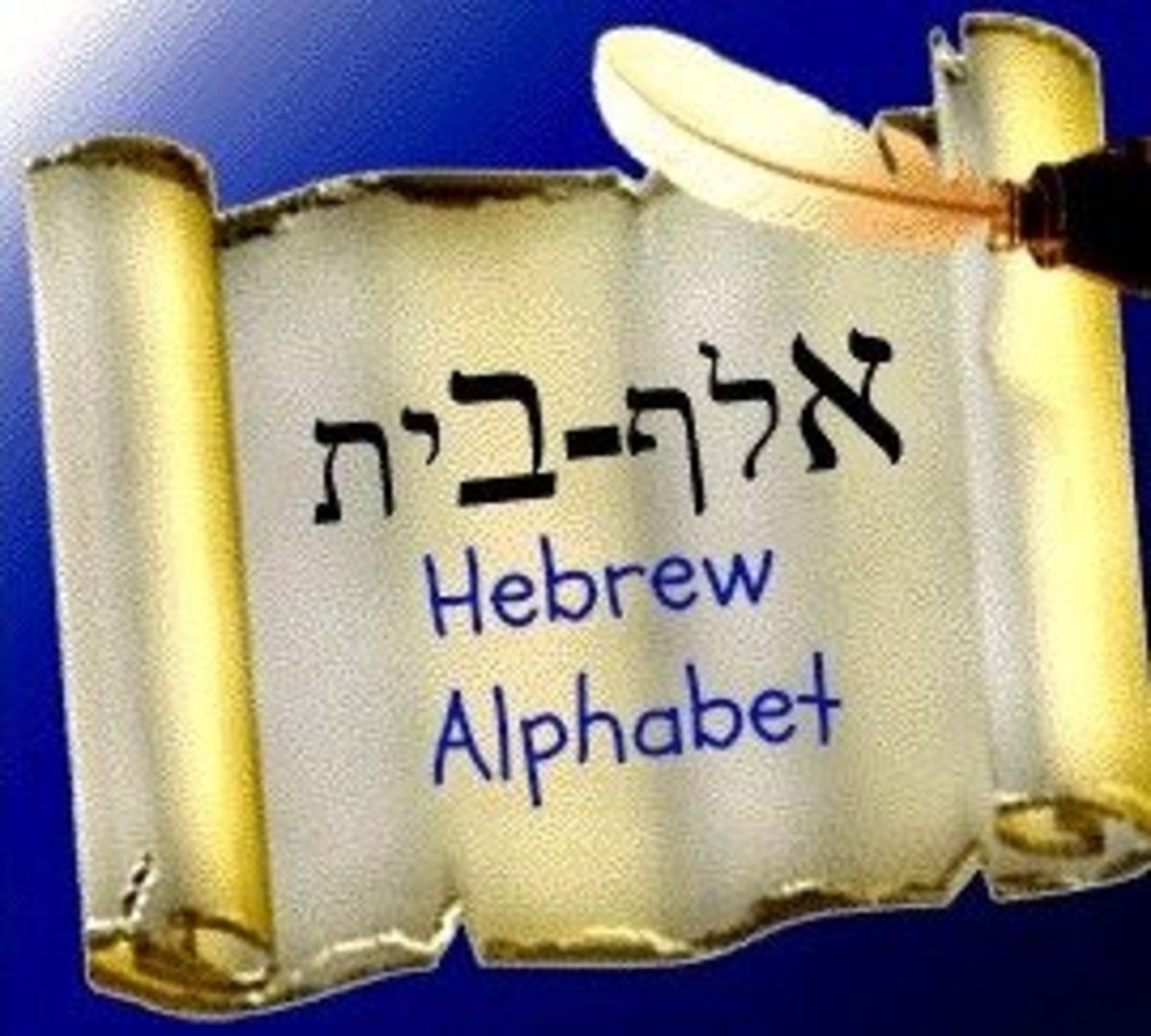The Sons of Zadok
To be Kahana is to have roots that stretch back over the centuries providing a firm anchor into the past, present and future. It is to know that one's ancestors have shared lives, loves, loss, happiness and sadness not too dissimilar from each successive generation. After all, we are what our ancestors have made us. We are also influenced by what has been written, whether or not it was truthful or accurate. In the second century BCE there were major political events afoot that led to the removal of the High Priest in Jerusalem. Some say it was the result of Seleukid (Greek) interference, others the usurping of the role by the Hasmoneans (Maccabees), and probably in either case due to a significant degree the opposition of the Pharisees that were rapidly gaining power as the 'new men'. But unlike the priesthood under the Roman occupation two hundred years later, at this juncture of time the position was still intended to be hereditary and still expected to be for the lifetime of the appointed individual. So by deposing the High Priest not only were those responsible for committing an affront to God but they would have also created a religious martyr (metaphorical death) that still held significant influence and authority. One such deposed priest was the Righteous Teacher that fled east towards Syria. He had protection under the Seleukid monarchy, so we can safely assume through logical ommission that it wasn't the Greeks that deposed him, and he still had a significant following that followed him out into the desert and later established themselves in Damascus. So that leaves only the Maccabees and the Pharisees as the arch enemies most likely responsible for his demise.
Over the years this particluar sect of the exiled priest had been influenced by other sects with whom they came in contact, in particular that of the Minim or Nazoreans, and as such, additions were made to their codified laws and their books. These are obvious when we examine the structure of the documents, and as such they should have no longer been referred to as the Zadokite document but instead something completely unique as they adopted the principles of other emerging sects. I refer to these numerous alterations in my hub, http://hubpages.com/hub/The-Zadokite-Document in which I conclude that the book no longer is an early Jewish document in its classification but actually was transformed into one of the first Christian Documents with the additions of the sayings and rules of the 'Unique Teacher' whom is referred to as a much later successor of the Righteous Teacher. Nevertheless, even with these later additions we can still disect out those original instructions laid down by the Righteous Teacher and by doing so, have a glimpse into our Zadokite past, a pure past of Judiac thought and practice. A time before the Pharisees and the Rabbanites had the opportunity to twist and distort the teachings to their own design. History is never as simple as what you've been told. There is always the tale from the victors, perhaps the survival of some snippets of information from history's losers, and then there is the truth. It's there, though it may be buried deep beneath a thick blanket of lies but with effort and determination it can be uncovered.
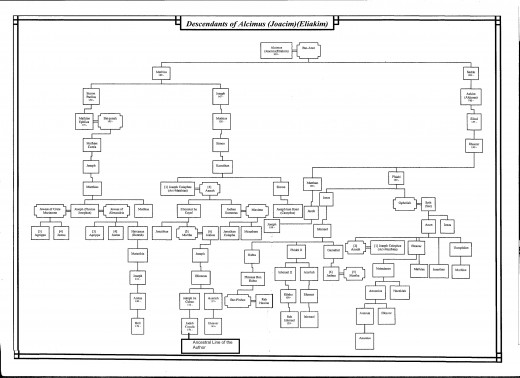
The Righteous Teacher
Exactly who was the Righteous Teacher that went into exile and represented the true High Priest of the Sons of Aaron? His identity is still up to conjecture but based on the stories that have circulated in the past his most likely identity was Eliakim, also known as Alcimus. From the Zadokite Document found in the Cairo Genizah in 1893 there are some clues as to the Teacher's true identity for they wrote that he was "His
anointed, through whom God made known to men his holy spirit, and who is
true." The other references to the Teacher of Righteousness in the document such as (1 11) "the only, or
beloved, teacher" (20 14); "the only one" (20 32); he is
"the legislator," that is, "the interpreter of the law" (6
7); and this interpreter of the law, who came to Damascus," would further suggest that he was in fact an anointed High Priest that had at one time officiated in the Temple of Jerusalem. But the references as be the one and only, the true priest, etc. presented in this defensive manner all suggest that there was now someone else holding the position that was neither respected nor thought as being entitled to the position. The document also states, "He
showed them how to walk in the way of God's heart (1 11); as interpreter of the
law he ordained them statutes to walk in till the end of wickedness--statutes
which shall not be superseded by any others "until there arise the teacher
of righteousness in the last days" (6 11 f.)." This gives us further reason to believe that the Teacher was also identified with the anointed from Aaron and Israel who would arise in the end of days. This is consistent with the Karaite belief in the two Messiahs of which the one, Messiah of Aaron would most likely be the greater of the two. As to why exactly the followers of the Righteous Teacher believed that he alone would be resurrected to fulfill this obligation is uncertain but it would appear that they held him in the same reverence as the prophet Elijah, whom was anticipated by the Pharisees to be resurrected in the end of days to herald the Davidic Messiah.
The Righteous Teacher is quite clear in his attitude as to the state of the Temple subsequent to his departure as he says, "Thou
shalt not light my altar in vain" quoting Malachi 1:10 and then instructs his followers to observe all the laws to do
according to the interpretation of the law as he saw it and not according to the wickedness that has replaced him. We must not casually overlook the quote from Malachi as it is clear that the Righteous Teacher has used the original 'my' reference to God as his own personal statement of his hereditary right to be the High Priest. The immediate inference is that who ever was standing in his stead now was not entitled to be there and was an imposter. He then instructs them that they must remain
separate from the children of perdition, and to keep aloof from unrighteous
gain, which is unclean by vow and ban, and from the property of the
sanctuary, and from robbing the poor of the people and making widows their
spoil and murdering orphans; and to separate between the unclean and the clean,
and to show the difference between the holy and the common; and to observe the
Sabbath day as it was defined, and the season feasts, and the fast-day, in
accordance with the commandments. It is evident that he is accusing those that now control the Temple and the Jewish population that follow the instructions of these interlopers of committing all the crimes that he has just listed. It is also clearly evident that the imposter that now held his former position in Jerusalem was re-interpreting the Laws of Moses to suit himself, and that would suggest he was under a Pharisee influence if anything else. This description of the times lends itself conveniently to the period shortly after the first Maccabees had themselves appointed both as High Priest and Prince of the nation. In regards to altering the laws, perhaps to Simon the Hasmonean as he was the most guilty of bending the rules to achieve his total domination of the nation.
The original instructions from the Righteous Teacher then mutate in parts into a polemic
directed against his opponents whom seized the authority of the High Priesthood and he describes them as
"those who build a wall and plaster it with stucco" (4 19; 8 12). Stucco is a metaphor for whitewashing; to conceal a rough unfinished surface behind a false front. This new priesthood that had taken over was a false exterior with a rotten core. The deposed High Priest further claims, "God hates them, his anger is kindled against them (8 18). These "builders"
are false teachers." He then rails against them for their practice of allowing polygamy and the remarriage of divorced persons
during the life of the other party, and holding it lawful for a man to marry his
niece." Furthermore he comments that they defile the sanctuary by the laxity of some of their rules and
practice about sexual uncleanness. He is particularly upset that this new priesthood accuses both the righteous teacher and his followers of being blasphemous, impugning the statutes of the covenant of God and denouncing them (4
20-5 14). It would appear from the external perspective in which this was now being written that the time frame has switched with the author speaking more about events that may have followed over a decade or two from the original exile. The intial references to a single wicked individual now refers to multiple enemies but the context of his words suggest a family in the sense that God hates 'them'; they are polygamous; they have built something together such as a dynasty; they are divorcing, marrying, etc. and marrying nieces. A fairly accurate description of what took place amongst the Hasmoneans as they seized control of the country and came farm more than princes and priests but had themselves proclaimed as monarchs by their Seleukid overlords.
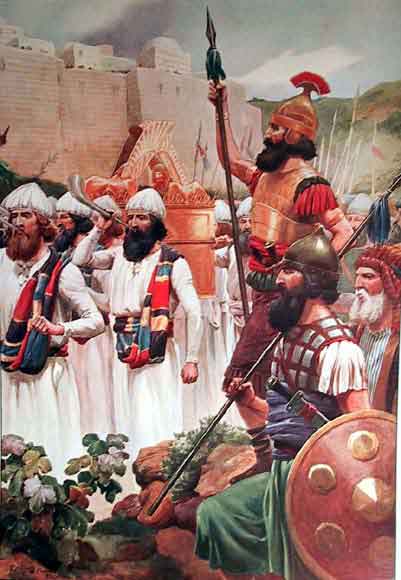
Eliakim
The identification of the Righteous Teacher as Eliakim (Alcimus) also makes sense through the process of elimination. We know it cannot be his cousin Onias III as he made his deparature and took his followers south into Egypt, not east into Syria. This Onias had allied himself with the Ptolemies of Egypt and having done so, he had placed himself in opposition to the Seleukid overlords that ruled Judea. Onias's brother Jason became High Priest but was accused of being a Hellenizer, leading to the rise of the Hasmonean revolt. Although what we read about Jason is a prejudiced report the arguments from all sources that he had taken to Hellenization to the extreme does not correspond well with the character of the Righteous Teacher who would appear to be more an advocate for more traditional Judaism, and the moral preservation of the society. Unless Jason had a revelation and changed his personailty 180 degrees it is unlikely that he could have been the one we're looking for. With the downfall of Jason, the Seleukid King interfered and placed his own man into the position of high priest. This was Menelaus, a Tobiad and as such, he would have only had a claim through marriage as his mother was the daughter of Onias II but his father Joseph was from the line of priesthood that served in the Temple on Mount Gerzim. One must be wary of accepting as truthful anything that was written by the Hasmonean scribes in the book of the Maccabees. It must be remembered that they themselves had no entitlement to claiming the High Priesthood therefore it was only natural that they accused every other claimant of being false and not worthy. Though Menelaus was not a direct descendant of Simon the Just, he was still a high priest of the family of Aaron and he was still the son of Simon the Just's granddaughter.
But what of Eliakim also known as Alcimus? How solid was his claim to the High Priesthood. The Book of Maccabees paints him as a lesser priest, unworthy of the position; a Hellenizer and a murderer. Accusstions which more aptly describe his Hasmonean accusers. Their justification for saying so was because Alcimus was not a direct decendant of Simon the Just. But he was the great granson of Simon's the Just's father, the first Onias. For Alcimus was the grandson of Simon's brother Eleazar and therefore, in the absence of any remaining male heirs amongst Simon the Just's direct descendants meant that the High Priesthood would revert to the next closest male line and that was Eleazar's. This meant that absolutely, Eliakm/Alcimus was the one true high priest and there were no other legitimate claimants. So how is it that the Maccabees portrayed him as a lacky of the Seleukid King, a murderous interloper, a devious, conniving purchaser of the birthright? Yet in the same book we hear that over what may have been six years of the revolt he was twice reinstated as the High Priest, he was acclaimed by the people, loved in Jerusalem, and even the Hasidim that had initially been hand-in-hand with the Hasmoneans in formenting the insurrection were in the majority dedicated to Eliakim's rule and acknowledged him as the one-true priest. The answer as I previously mentioned was simple. Those that were eventually successful in the revolt would rewrite history as they wished. According to their narrative there could be no question to their legitimacy. They could not afford to tell the truth and thus raise questions as to their true motives and to the wickedness of their policies. With time the populace would overlook the Hasmonean's family lack of bloodline to claim the highpriesthood. They would overlook the fact that the men acting as High Priests did so with the blood of their enemies upon their hands that they had personally slain in battle. They would ignore the fact that they had put a princely crown upon their heads though they had not Davidic claim to such a position. They would dismiss the fact that they began to intermarry amongst themselves, taking their brother's wives as their own, wedding their nieces and behaving like the despots of surrounding countries.
Too late for those Hasidim that had supported the Maccabees in their revolt. For when they saw the error of their ways, the power was already too firmly held in the palms of these Hasmonean kings. Those that regretted or repented were branded as enemies of the state and then the slaughter of the Pharisees and Hasidim began. Ironically the same crime they accused Eliakim of performing though his number they mention was limited to only 60 men whereas theirs numbered in the thousands.
It is said in the documents of the Damascus community that their Righteous Teacher was killed by the Wicked Priest. Like so many ancient Judaic stories there would appear to be two parallel events overlaid one upon the other. One concerns events in a metaphorical fashion in the later community and has to do with the Christian developments that appear to have integrated amongst its followers but there is still an indication of some tragic murder occuring in the past to the Righteous Teacher, himself and is a description of an actual event. The book of Maccabees briefly tells the story of Eliakim's death while renovating the Temple during his second installment as High Priest. But then Josephus tells a version of the story and so does the Midrash and the three are not in agreement. The confusion suggests that there was a cover-up and cover-up suggests there was a murder. Even the accident in the Temple has two versions. One is he was pulling down an old wall built at the time of the prophets and had a heart attack, another says the wall fell on him and killed him. Then there are even two stories where the wall was placed. One say it was in the inner court but there would have been no wall higher than waist level in the inner court. The other says it was the wall between the Court of Gentiles and the Court of Women but there would be no reason to pull that wall down, just as there would have been no reason that Alcimus would have been doing the physical work himself. But the other story talks about him trying to save his uncle from execution and because of that he had the heart attack. Of course the Midrash takes that story and says it was because he was riding to save his uncle on the Sabbath and God punished him. Josephus makes a comment regarding suicide but all in all what these conflicting stories suggest is murder and that the truth was altered to hide the facts. Let us presume the followers of the Righteous Teacher were correct.
Zadok
As those that read my articles know, I am a Zadokite in practice. My thoughts on the Messiahs, the afterlife (or lack of it), etc. have all been influenced by my Zadokite inheritance, the same beliefs that earned Zadok both condemnation and the hatred of the Pharisees and their modern descendants the Rabbanites. In many ways I can relate to the community in Damascus that wrote the Zadokite document, at least from their early stages before they became influenced by Nazorean beliefs later on. But how could Zadok have risen to such prominence that he could leave a lasting memory even if it was despised by those Jews that followed the Rabbanite ways? As the son of Alcimus he inherited the ability to speak with authority. His voice still commanded in the thousands even though the Hasmoneans ensured that they never let him loose from beneath their thumbs. He was beyond their threats, protected by the public knowledge that he alone possessed the bloodline that should have stood in the Holy of Holies. Had the Hasmoneans dared to lay a hand on him, the people would have risen against them and stripped them from that which they have stolen through force of arms. Zadok's name became synonomous with the preservation of the old ways. He was the balwark against change. He stood against the Hellenization that the the Maccabees actually introduced into the land, not prevented, and his teachings also were there to prevent the Romanization that eventually happened in 69 BCE when one of the last of the Hasmoneans invited this new power to occupy the land. But the story of Zadok deserves far more than to be just a footnote to his father. And therefore I will tell that story another day and another time.
